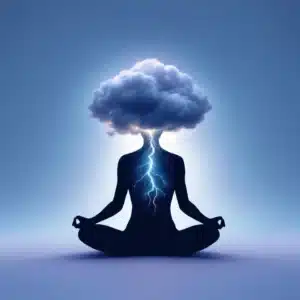10 Proven Techniques to Instantly Relief Stress at Home

Have you ever felt overwhelmed by the weight of stress, unsure of how to shake it off? Stress is a common experience, but its impact can be managed through effective techniques. This article explores 10 proven methods to instantly relieve stress at home, allowing you to regain control and foster a sense of calm.
1. Introduction to Stress Relief Techniques at Home
Understanding Stress
Stress is a natural response to challenges and pressures in life. It can be triggered by various factors, including work, family, and health concerns. The body react to stress by releasing hormones like cortisol, which can lead to tension and anxiety. Recognizing the sources of your stress is the first step in managing it.
Importance of Stress Relief
Relieving stress is crucial for maintaining both mental and physical health. Chronic stress can lead to serious health issues, including heart disease, anxiety disorders, and depression. Implementing stress relief techniques at home can help improve overall well-being, boosting mood and energy levels.

2. Technique 1: Deep Breathing Exercises
How to Perform Deep Breathing
- Find a Comfortable Position: Sit or lie down in a comfortable place.
- Inhale Slowly: Breathe in deeply through your nose, allowing your stomach to rise.
- Hold the Breath: Pause for a moment, holding the breath in your lungs.
- Exhale Gradually: Release the breath through your mouth, letting your stomach fall.
- Repeat: Continue this cycle for a few minutes.
Benefits of Deep Breathing
Deep breathing helps lower stress hormones and calms the nervous system. It promotes relaxation and can be practiced anywhere, making it a versatile tool for stress relief.
3. Technique 2: Progressive Muscle Relaxation
Steps for Progressive Muscle Relaxation
- Get in a Comfortable Position: Lie down or sit in a relaxed posture.
- Tense and Relax: Start with your feet, tensing the muscles for 5-10 seconds, then releasing.
- Move Up the Body: Gradually work through each muscle group, tensing and relaxing.
- Breathe: Inhale while tensing, and exhale while relaxing.
When to Use This Technique
Progressive muscle relaxation is particularly effective when you feel physically tense or before bed to promote restful sleep.
4. Technique 3: Guided Meditation
What is Guided Meditation?
Guided meditation involves following a voice or text that leads you through a meditation process. It can help focus your mind and promote relaxation.
Best Guided Meditations for Stress Relief
- Calm App: Offers a variety of guided meditations.
- Headspace: Provides meditation sessions tailored for stress.
- Insight Timer: A free resource with numerous guided meditations.
5. Technique 4: Physical Activity at Home
Types of Home Workouts
- Bodyweight Exercises: Push-ups, squats, and lunges can be done without equipment.
- Yoga: Enhances flexibility and reduces stress.
- Dance: Moving to your favorite music can be a fun way to relieve tension.
How Exercise Reduces Stress
Physical activity increases endorphins, the body’s natural mood elevators. It also helps distract you from stressors and improves sleep quality.
6. Technique 5: Journaling
Benefits of Journaling for Stress
Journaling allows you to express thoughts and feelings, which can clarify emotions and reduce stress. It’s a private space where you can reflect without judgment.
Tips for Effective Journaling
- Write Daily: Set aside a few minutes each day to write.
- Use Prompts: If stuck, use questions like “What am I grateful for?”
- Be Honest: Write what you truly feel, without worrying about grammar or structure.
7. Technique 6: Aromatherapy
Introduction to Essential Oils
Aromatherapy uses essential oils to improve mood and reduce stress. Popular oils for stress relief include lavender, chamomile, and eucalyptus.
How to Use Aromatherapy
- Diffuser: Add a few drops of essential oil to a diffuser.
- Inhale Directly: Use a tissue to inhale the scent.
- Massage: Dilute with carrier oil and apply to the skin.
8. Technique 7: Listening to Calming Music
Types of Calming Music
- Classical Music: soothing melodies can slow heart rate.
- Nature Sounds: ocean waves or forest sounds can be very calming.
- Meditation Music: specifically designed to reduce stress.
How Music Affects Stress Levels
Music can alter brain waves, promoting relaxation and lowering cortisol levels. Listen to calming music during stressful moments to ease tension.

9. Technique 8: Connecting with Nature
Benefits of Nature on Mental Health
Spending time in nature can reduce stress levels and improve mood. It allows for a sense of connection with the environment.
Bringing Nature Indoors
- Houseplants: Adding greenery can improve air quality and mood.
- Nature Videos: Watch documentaries or nature footage online.
- Outdoor Time: Take a walk in a park or garden.
10. Technique 9: Setting a Relaxing Environment
Tips for Creating a Calm Space at Home
- Declutter: Keep your space organized and free from excessive items.
- Lighting: Use warm, soft lights to create a cozy atmosphere.
- Comfortable Seating: Invest in plush seating that promotes relaxation.
Importance of Ambience
A calming environment can significantly reduce stress. It becomes a sanctuary where you can unwind and recharge.
11. Technique 10: Time Management and Schedule
How to Manage Time Effectively
- Set Clear Goals: Define daily and weekly objectives.
- Prioritize Tasks: Focus on what is most important.
- Use a Planner: Keep track of tasks and deadlines.
Reducing Stress through Planning
Effective time management minimizes last-minute rushing, which is a major source of stress. A well-structured routine can enhance productivity and peace of mind.
12. Frequently Asked Questions
What is the fastest way to relieve stress at home?
The fastest way is often deep breathing exercises, as they can be done in a few minutes and provide immediate relaxation.
Can stress relief techniques be done daily?
Absolutely. Daily practice of techniques like meditation, journaling, or physical activity can greatly enhance overall stress management.
Is meditation the best way to reduce stress?
Meditation is a highly effective method, but the best technique varies by individual. It’s essential to explore and find which methods work best for you.
How long should I practice these techniques for results?
Consistency is key. Practicing these techniques for at least 10-15 minutes daily can lead to noticeable improvements in stress levels.
Stress relief is a personal journey, and each technique has its unique benefits. By incorporating these methods into your daily routine, you can find a balance that suits your lifestyle and promotes a more relaxed, fulfilling life.
Scientific References
- Goyal, M., Singh, S., Sibinga, E. M. S., & Goel, V. (2014). Meditation programs for psychological stress and well-being: A systematic review and meta-analysis. JAMA Internal Medicine, 174(3), 357-368. Link
- Hart, L. L., & Lovato, N. (2018). The effects of music on the human brain: A systematic review. Frontiers in Neuroscience, 12, 355. Link
- Sanches, P. H. A., & McGuire, A. L. (2020). Aromatherapy and breathing techniques: A systematic review of the literature. Complementary Therapies in Clinical Practice, 40, 101131. Link


